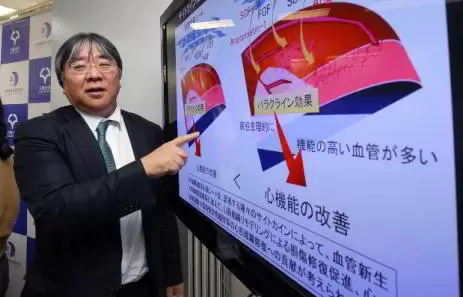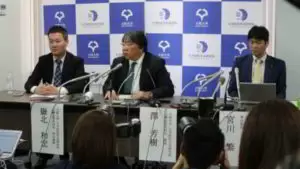
Views: 54
– Osaka University has announced that it has developed a new treatment for heart failure, which involves spraying stem cells directly onto the heart’s surface and aims to make it available to patients in three to five years.
Minapim by Hernan Valenzuela: Created by a team led by Yoshiki Sawa, professor of cardiovascular surgery at the university, the Heart failure simple treatment does not require the use of cell processing facilities, meaning it can easily be put into practice in hospitals without them.
The treatment targets patients with ischemic cardiomyopathy, a condition in which the heart muscles do not receive sufficient blood supply. If it gets worse, the heart muscles become necrotic and the heart’s ability to pump blood decreases.
The new method involves spraying mesenchymal stem cells on adhesive solutions in patients’ hearts during myocardial revascularization surgery. The process takes less than a minute.
“Conducting it concurrently with myocardial revascularization surgery helps in the recovery of heart function,” Sawa told a news conference.
The team aims to verify the safety and effectiveness of treatment by conducting a clinical trial conducted by a physician at Osaka University Hospital and obtaining approval for public health care coverage.
Professor Yoshiki Sawa, a heart surgeon at the University of Osaka, Japan, has been developing this IPSC therapy for heart disease patients. The technique involves using IPSCs to create a sheet of 100 million heart muscle cells and graft them into the heart, where they appear to release growth factors that promote the regeneration of damaged muscles.
The technique was tested on pigs last year and has been shown to improve organ function, so Sawa promptly submitted a research plan to conduct trials on human patients. This plan has now been conditionally approved by the Japanese Ministry of Health. Three people are scheduled to receive treatment and will then be observed for the next 12 months.
This path to clinical use is made possible by Japan’s rapid approval system, which was introduced in 2014, and not without criticism. The system aimed to increase access to regenerative drugs by introducing laws that allow the use of emerging treatments, as long as they are proven safe, with only suggestions of their effectiveness.
The same team had already developed a separate treatment that involved transplanting “sheets” of heart muscle cells created by culturing cells taken from the thighs. Although treatment is already in place, it has not become popular because the method requires a cellular processing facility.
In any case, the team will seek to accompany this first human study with a larger clinical study involving about 10 patients. If all goes as planned on this front, commercial availability may occur.
Sources: Nature Osaka University
Related article: Blood Marker – New marker for atrial damage discovered